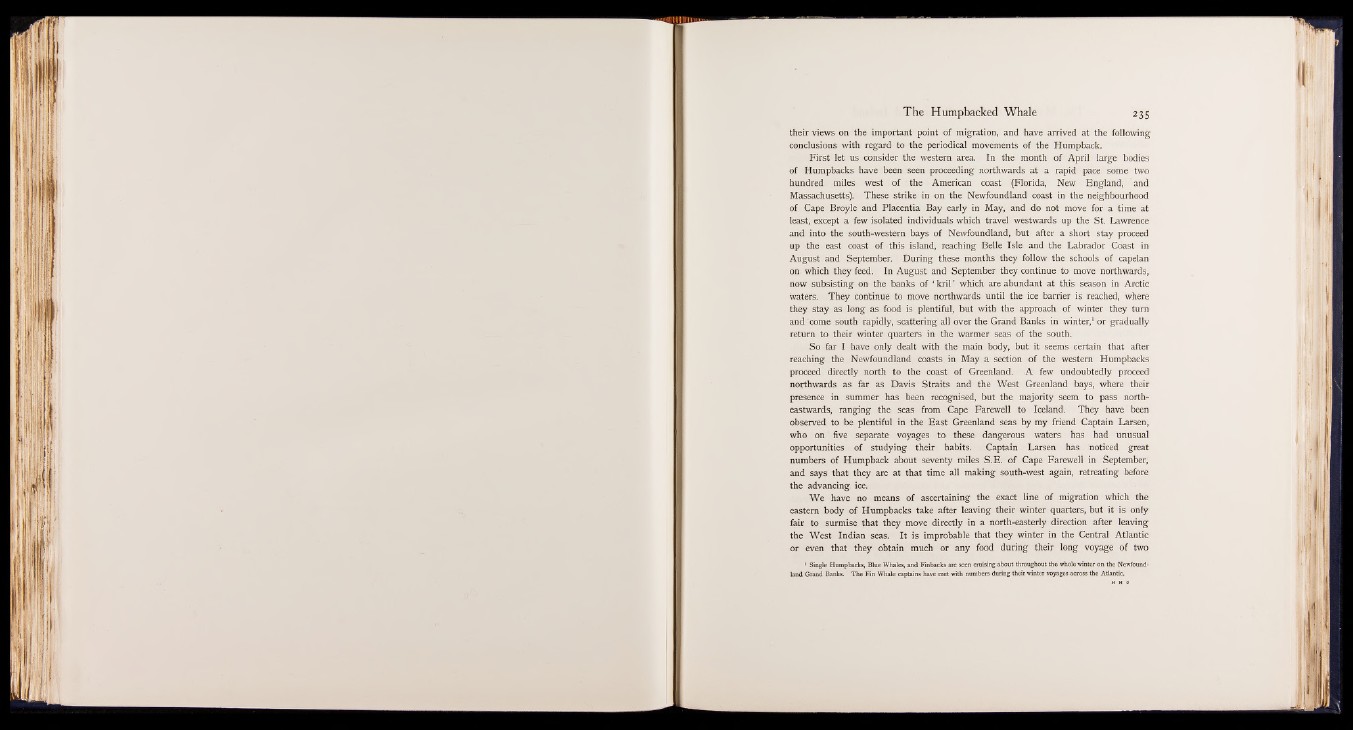
their views on the important point of migration, and have arrived at the following
conclusions with regard to the periodical movements of the Humpback.
First let us consider the western area. In the month of April large bodies
of Humpbacks have been seen proceeding northwards at a rapid pace some two
hundred miles west of the American coast (Florida, New England, and
Massachusetts). These strike in on the Newfoundland coast in the neighbourhood
of Cape Broyle and Placentia Bay early in May, and do not move for a time at
least, except a few isolated individuals which travel westwards up the St. Lawrence
and into the south-western bays of Newfoundland, but after a short stay proceed
up the east coast of this island, reaching Belle Isle and the Labrador Coast in
August and September. During these months they follow the schools of capelan
on which they feed. In August and September they continue to move northwards,
now subsisting on the banks of ‘ kril ’ which are abundant at this season in Arctic
waters. They continue to move northwards until the ice barrier is reached, where
they stay as long as food is plentiful, but with the approach of winter they turn
and come south rapidly, scattering all over the Grand Banks in winter,1 or gradually
return to their winter quarters in the warmer seas of the south.
So far I have only dealt with the main body, but it seems certain that after
reaching the Newfoundland coasts in May a section of the western Humpbacks
proceed directly north to the coast of Greenland. A few undoubtedly proceed
northwards as far as Davis Straits and the West Greenland bays, where their
presence in summer has been recognised, but the majority seem to pass northeastwards,
ranging the seas from Cape Farewell to Iceland. They have been
observed to be plentiful in the East Greenland seas by my friend Captain Larsen,
who on ' five separate voyages to these dangerous waters has had unusual
opportunities of studying their habits. Captain Larsen has noticed great
numbers of Humpback about seventy miles S.E. of Cape Farewell in September,
and says that they are at that time all making south-west again, retreating before
the advancing ice.
We have no means of ascertaining the exact line of migration which the
eastern body of Humpbacks take after leaving their winter quarters, but it is only
fair to surmise that they move directly in a north-easterly direction after leaving
the West Indian seas. It is improbable that they winter in the Central Atlantic
or even that they obtain much or any food during their long voyage of two
1 Single Humpbacks, Blue Whales, and Finbacks are seen cruising about throughout the whole winter on the Newfoundland
Grand Banks. The Fin Whale captains have met with numbers during their winter voyages across the Atlantic.